Commitment
 Annual Report of Planned Giving for the year ending June 30, 2022
Annual Report of Planned Giving for the year ending June 30, 2022

 Annual Report of Planned Giving for the year ending June 30, 2022
Annual Report of Planned Giving for the year ending June 30, 2022
Welcome to UC Santa Barbara’s 2021-2022 Annual Report of Planned Giving! We are deeply grateful to the many individuals who thoughtfully created legacy commitments during this time of ongoing change. The impact created through these gifts is a testament to all those who aspire to make UC Santa Barbara a beacon of opportunity, discovery, and excellence.
The stories featured in this issue include a wide variety of donors, programs, and methods for establishing a planned gift. We hope you find these examples of generosity to be inspiring.
We encourage you to share your own commitment with us, anonymously or otherwise. It would be our honor to welcome you to the UCSB Legacy Circle. Many thanks to those who have already created legacies to help ensure UC Santa Barbara’s success for the next generation of students, and to those who are considering establishing such commitments in the near future.
Ilana Ormond Senior Director, Planned Giving
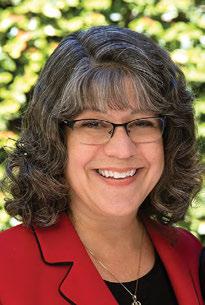
Through planned gifts, our donors craft powerful philanthropic visions and leave meaningful legacies. Planned giving involves a donor’s intention to contribute a gift to an organization during or beyond their lifetime as part of financial or estate planning. Giving options may include bequests, charitable trusts, appreciated assets, real estate, retirement plans, and life insurance. These commitments help UC Santa Barbara fulfill our promise to educate students and pursue high-impact research. Our community of supporters has embraced the power of planned giving, and the forward-thinking members of our Legacy Circle are a guiding light for UC Santa Barbara’s research, teaching, and public service. Annual Report of Planned Giving


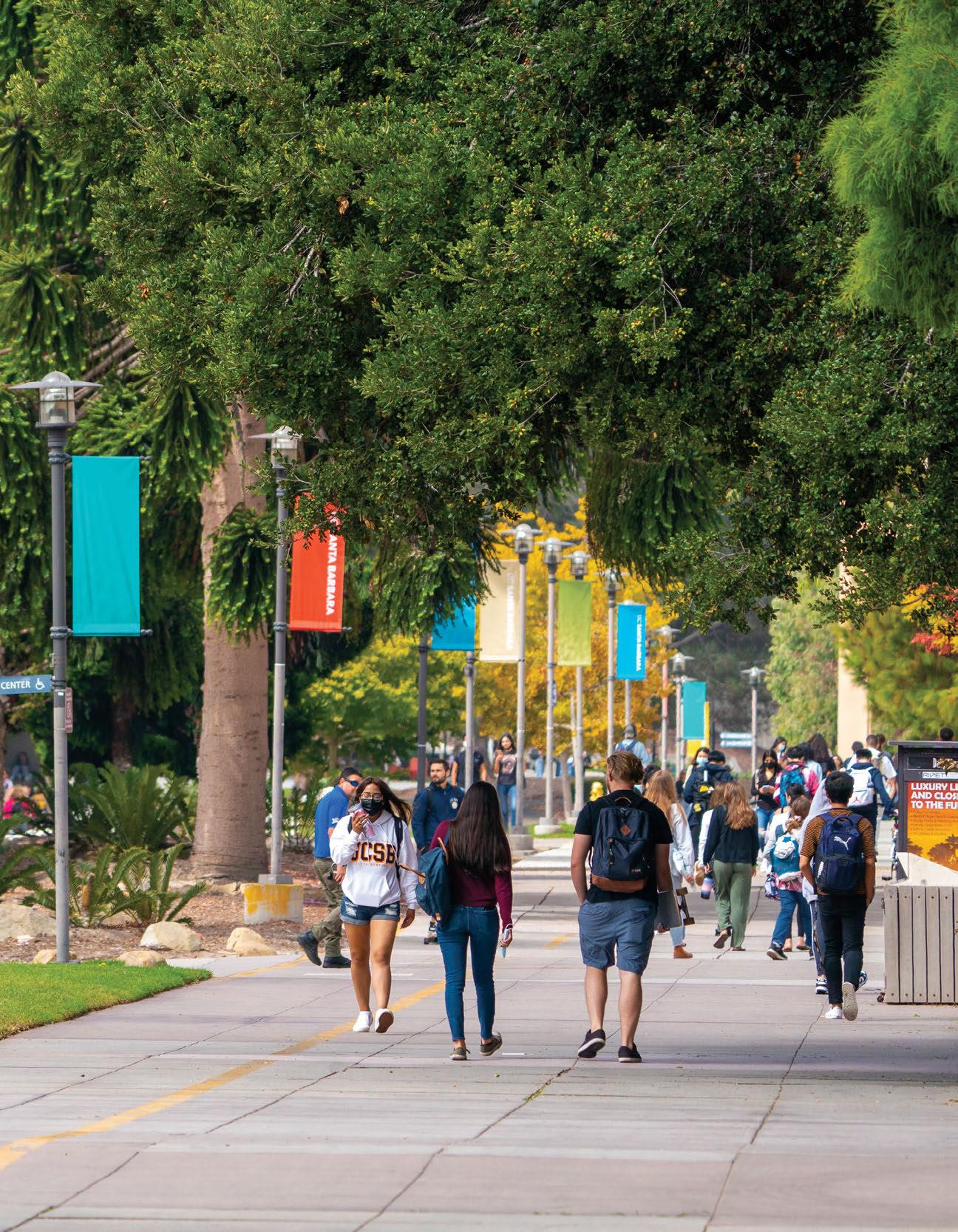
The UC Santa Barbara Library Early Recordings Initiative takes a collecting strategy common in the art world and applies it to early sound recordings, allowing people to sell, donate, or combine the two when giving their collection to the UCSB Library. John Levin, a collector of 19th and 20th century wax cylinders, established the initiative to encourage fellow collectors to donate artifacts rather than storing them in attics or selling them piecemeal. In a few generations, wax cylinders in private collections will disintegrate. The Early Recordings Initiative will help prevent this fate, documenting the musical, social, and cultural life of late 19th and early 20th century America.
“Collectors have been confronted with a binary choice: to realize the value of their collection by scattering it by private sales through auction houses and other outlets, or donating it to get a tax deduction,” said John. “The rationale against the latter has been a pervasive belief that the stuff is sold anyway. I wanted to model a different paradigm.”

Collector John Levin combines a new initiative with an endowment and collection
John’s paradigm has three pillars: the Early Recordings Initiative; his gift of 3,200 rare and unique early commercial records to join the existing John Levin Collection; and an endowment to help curators preserve and digitize artifacts through the UCSB Cylinder Audio Archive. John supports the endowment now and also through his estate plan.
First invented by Edison in 1877, cylinders are about the size of a soda can and made of a hard soap with the texture of wax. Early in his collecting, John became focused on how to play them without inflicting wear. He reached out to David Seubert, a curator in the UC Santa Barbara Library’s Special Research Collections, who had already developed an end-to-end process to catalog, digitize, restore, and publish recordings through the UCSB Cylinder Audio Archive.
“It was a really foresighted thing to do,” said John. “If you look at the other important audio archives in the world, very few of them are as comprehensive as UC Santa Barbara.”
“John has one of the best collections of 19th century sound recordings in the world, and by ensuring their long-term preservation at the UCSB Library, he is further cementing UC Santa Barbara’s role as the premier research institution for the study of early recordings in the U.S. An institution’s relationship with its donors can often be seen as passive, but this partnership models a new and exciting approach to
the curation of our collections by leveraging the different strengths of collectors and institutions,” said Seubert.
These fragile recordings cannot be fully studied and understood until there is a critical mass accessible to a wide audience of scholars, enthusiasts, and the public. In collaboration with the UCSB Library and UCLA, John has developed his own cataloging system for the collection.


A commitment to open access for all artifacts — not just a collection’s gems — influenced John’s choice to bequeath his collection to UC Santa Barbara and to provide a financial commitment in his estate plans to grow the endowment. John trusted the UCSB Library to keep it available to the public and guard against deaccession, or the sale of artifacts.
“The Early Recordings Initiative was central to doing this. It pulls together my collection, the endowment, and my goals,” said John. “This gift is for people who want to know what the world sounded like.” He’s wanted to hear the past since he was child in the early 1960s, listening to an Edison phonograph for the first time on a farm stand in rural Long Island, New York.
John will remain an active partner in the John Levin Collection and Early Recordings Initiative. Ten years ago, he worked with Seubert to share a record called “Haul the Woodpile Down” online. The post, called Incunabula 2, went viral in the classic banjo world. Perhaps a hundred people could have listened to the original wax cylinders before they wore out forever. Now, 125 years later, they have been heard by thousands.
Kim Whitter ’87 liked science from a young age, but felt disconnected in the pre-med classes at UC Santa Barbara. During this time, Kim was commuting to and from campus while working at U.S. Navy’s research, development, testing, and evaluation government facility located in Port Hueneme. One day, Kim’s engineering colleagues introduced her to Geographic Information Science (GIS), a remote sensing and image processing specialty. She soon discovered that UC Santa Barbara was the top university for several emerging science, technology, engineering, and math fields, such as GIS, and quickly changed her major. This began a lifelong love affair with geography, a field that she hopes to continue encouraging young women in STEM fields to study through her legacy gift.

In honor of her late mother, Kim Whittier ’87 gives young geographers direction
The UC Santa Barbara Department of Geography is internationally recognized as one of the best in the world. The GIS domain — the field which Kim studied — is the data science behind map data. By using GIS, geographers can study fascinating interactions between people and the planet.
GIS was a strikingly new field when Kim graduated from UC Santa Barbara. Her colleagues still joke that she is their organization’s first geographer (and a female geographer at that).
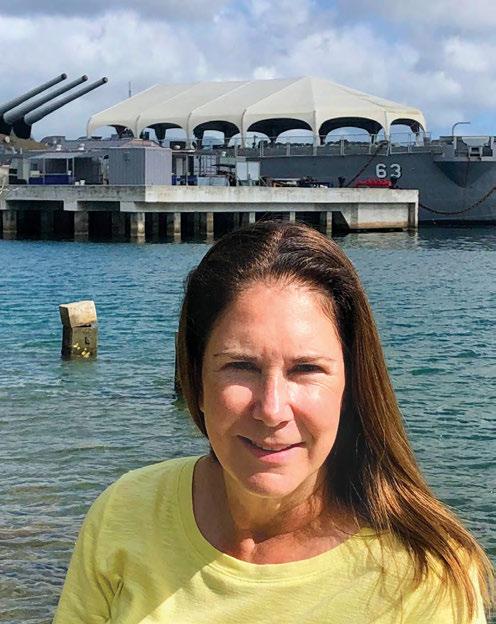
“It was difficult to get people to think outside the box,” said Kim. “GIS is now applied to utilities, the environment, emergency services and response. It has grown significantly.”
Reflecting back, Kim’s favorite project was designing a GIS for a naval air station located in the U.S. territory of Guam. When it came time to showcase the plans to government and military officials, Kim herself was elected as the presenter.
“I remember someone saying that the presentation was better than Star Wars,” said Kim. “That comment still makes me laugh to this day.”
Through a generous bequest to the STEM fields at UC Santa Barbara and more specifically for the Department of Geography, Kim hopes her legacy gift will inspire more students — especially women — to pursue the sciences (and better yet, remote sensing).
The legacy gift, named The Delma C. Whittier Scholarship Fund, is dedicated in honor of Kim’s late mother.
“I had very strong women guiding me through my adolescent and early adult years,” said Kim “My mother was an accounting technician, and my grandmother worked as a hospital administrator; keep in mind, both my mother and grandmother worked when women in the workforce was an abnormality, not a norm.”
Kim added, “Over the past 35 years, I have seen an increase in women engineers, hydrologists, chemists, and geographers, but truthfully, there needs to be
more of us. Women are more than capable of thriving in a STEM-related career. My intention with this legacy gift is to continue the narrative that STEM careers are interesting, professionally rewarding, and frankly, can be very fun.”
“We are so grateful for donors like Kim,” said Trisalyn Nelson, department chair and Jack and Laura Dangermond Professor of Geography. “Her generosity helps us support students. Women have typically been underrepresented in geographic data science, and given the Department of Geography’s prominence in this area, it is really exciting to be able to amplify and encourage the success of our women students.”
“I could not think of a better honor than to take this money I’ve built over the course of my career and funnel it back into the educational system that will not only impact women in STEM, but our nation as a whole,” said Kim.
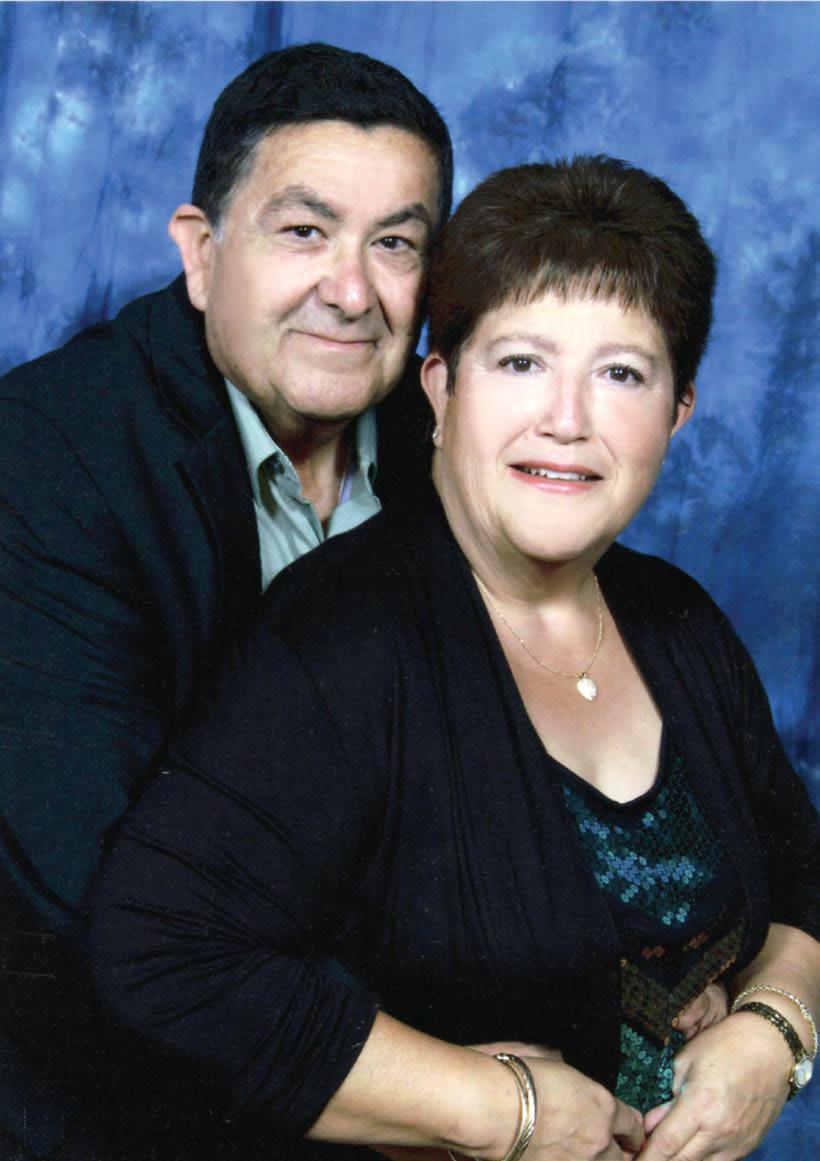
Soledad and Dennis Morelos met when she was 18 years old and he had just finished a four-year tour of duty with the U.S. Navy during the height of the Vietnam War. Soledad told a friend, ‘I’m going to marry Dennis someday.’ Twenty-nine years later, they reconnected at a baptism. They married in 2001 when Dennis was 52 and Soledad was 47, a first marriage for both. Through the wedding, the Moreloses united Dennis’ 13 siblings and Soledad’s five siblings, along with a large extended family embedded in Santa Barbara. Soledad passed away in 2020, leaving behind a legacy as a caring and committed community leader.
“When we decided to do our estate planning, Soledad wrote a list of what she wanted, I wrote a list of what I wanted, and we were pretty close,” said Dennis.
That was no surprise. Dennis and Soledad shared a love for Santa Barbara, where they were raised and had lived most of their lives — since before highway 101 was built. They supported many local organizations. UC Santa Barbara’s Koegel Autism Center had a special place in their lives, and when designating their charitable beneficiaries, they decided to name the center as the recipient of a generous bequest. Soledad’s great-niece benefitted from the interventions and resources available there.
“It was really wonderful, and I know she’s done really well,” said Dennis. “She’s graduated from high school and she’s now working. The center was a great help for her. With autism, every individual is different, and
The center is internationally recognized for its innovative autism research and clinical training. Led by Dr. Ty Vernon and Dr. Anna Krasno, it focuses on the development and implementation of strength-based, motivational interventions and support for individuals and families affected by autism spectrum disorders.
“Private philanthropy plays a critical role in advancing the mission of the autism center. Generous pledges like the Morelos family’s estate gift ensure that we remain at the forefront of autism intervention science and are able to develop innovative new therapies that change the lives of children and adults on the autism spectrum,” said Vernon.
Soledad was a nurse at St. Francis Hospital and other medical facilities for over 35 years. Dennis followed his Navy service with a varied career in livestock feed and oil. In their retirement, the Moreloses traveled from California to Dollywood, New York, Graceland, and around the world. There was something special about every new place, but Santa Barbara was their home, and there was nothing like its small town feel.
“The time that we had together was really good,” said Dennis. “To us, what’s better than to give back to the community, especially those who really need the help?”
Dennis Morelos and his late wife, Soledad, focused their estate plan on their community we were really impressed with how they worked with each person.”
The daughter of Filipino immigrants, Carla Van Hoven Riley ’96 arrived on campus as a transfer student in search of financial security. In honor of the path she found at UC Santa Barbara, Carla and her husband, Christopher, are proud to support scholarships for students in STEM and economics. The family intends to continue that support in perpetuity through a bequest in their estate plans.
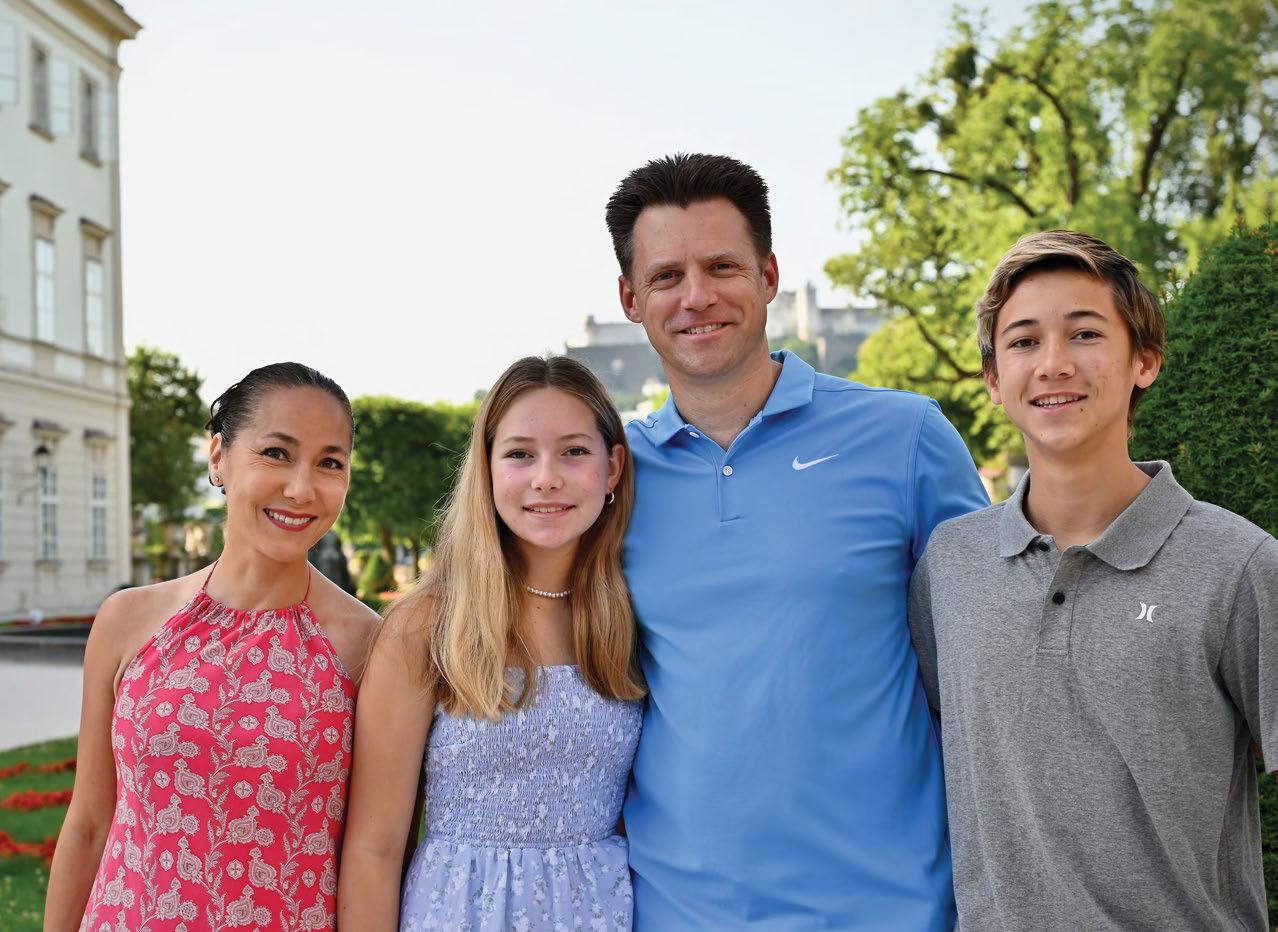
“I want to help people like me pursue the American dream,” said Carla. “If a student works hard and gets into a good school, being able to reduce their financial burden so that they can focus on their studies is something that is important to me and my husband. We both feel very passionate about education in business and STEM because we truly feel that those disciplines offer great prospects for employment.”
For Carla, college meant a career. She found a network of equally driven peers at UC Santa Barbara. The Department of Economics has strong relationships with Big Four accounting firms, which helped Carla to secure a job at KPMG, a multinational professional services network, prior to graduation.
“Many other UCSB alumni joined me at KPMG,” said Carla. “That gave me a sense of community within the alumni network.”
Carla worked at KPMG for four years. Because UC Santa Barbara had shown her the power of a good education, she decided to pursue graduate school at Northwestern University, where she met Christopher.
“We really try our best to model for our kids the idea of giving back through volunteer work and making charitable gifts,” said Carla. “We have been open about our long-term financial planning, taking care to ensure that our children understand that it goes beyond just taking care of ourselves. Our hope is that the kids will follow our lead and do something similar when they eventually graduate from college.”
The Rileys began their philanthropy with annual giving to the university. They felt a strong connection with the low-income, first-generation students in The Promise Scholars Program, which guarantees recipients full funding and wraparound services for their college career.
“We had a pandemic Zoom call with a Promise Scholar who inspired me. I knew that if we could do more for students, it could even the playing field,” said Carla.
The Rileys help provide community-building events for students like Maxwell Baruetta ’25, who calls the Promise Scholars program a guiding light. Max serves on the Promise Scholars Advisory Board to plan engagement activities for his peers.
“This is one of the greatest aspects of the Promise Scholars program,” said Max. “In total, there are only 500 Promise Scholars in this huge campus. A hundred students attended our finals week event called Study Jam. The fact that they were all Promise Scholars was mind-blowing to me, and I loved to see everyone come together. It’s amazing that the Riley family is helping to provide this resource for firstgeneration, low-income students who have doubts and questions about belonging.”
Being able to see their impact firsthand moved the Rileys to do more.
“Because we feel such a passion for education and we see the greatness that UC Santa Barbara achieves, we decided to create a legacy commitment with the hope that we can have a multigenerational impact beyond our annual giving,” said Carla.
“Through this gift, Carla and Christopher will provide scholarship funding for the next generation of students at UC Santa Barbara, and it will help to attract and support more women in economics. The Department of Economics is enormously proud of Carla’s success in the business world and deeply grateful to her for donating both time and money to our students,” said Erik Eyster, department chair.

The late Arvid James “Jim” Peterson ’80 received his bachelor’s degree in environmental studies from UC Santa Barbara. His lifelong support of campus as an alumnus grew with the Environmental Studies Program. In honor of the program’s 50th anniversary in 2020, Jim established the A. James Peterson Fund for Advancing Environmental Leadership to help train the next generation of environmental leaders. Jim subsequently named the fund as a beneficiary in his estate plans.
Established in 1970, the Environmental Studies Program is one of the oldest and largest programs in the nation. Its 7,500 alumni hold leadership positions in government, industry, law, civic organizations, and dozens of other fields. Students develop the technical aspects of environmental science and policy alongside the motivational, practical, and leadership capabilities that enable them to be agents of change.
Jim was among the program’s first decade of students. He graduated with bachelor’s degrees in environmental studies and business economics and later obtained a master’s in environmental science and engineering from California State University, Sacramento. For 30 years, he specialized in environmental health and safety for the engineering industry and the State of California.
Jim’s respect for the earth was his most cherished belief, and he always found meaning and fun in life. His generous bequest will continue to protect the Earth and the things he loved. The A. James Peterson Fund for Advancing Environmental Leadership will support three areas within environmental studies: field and laboratory equipment, lecturers, and internships.
“This generous gift from Jim Peterson’s estate will significantly expand the Environmental Studies Program’s capacity to offer experiential learning and teaching opportunities for our students,” said David Pellow, Dehlsen Professor of Environmental Studies
and department chair. “Mr. Peterson was a big believer in the need to ensure that students have access to hands-on scientific instruction, learning, and training, so his support for the purchase of field research and laboratory equipment will provide high impact resources for our students.”
Laboratory and field experiences help students learn to address the challenges inherent in directly observing and manipulating the material world, including troubleshooting equipment used to make observations, understanding measurement error, and interpreting and aggregating the resulting data. Equally important, they help enhance student interest and motivation. In the program’s lab and field experiences, students learn to test water, monitor soil moisture, use a Geiger counter, and recycle an aluminum can into the compound alum.
“We are thrilled that Mr. Peterson’s gift will also be directed at supporting student internships as well as a lecture series, which will facilitate and deepen our professionalization efforts and initiatives, enabling students to gain skills that will open doors for their futures that would not be available otherwise. This is exactly the kind of support that will serve our students well and help them thrive in the years ahead,” said Pellow.
By creating an irrevocable commitment in his estate plans, Jim was able to add to his fund so that it would be permanently endowed. The subsequent growth in support will be magnified, with all three areas receiving significant funding on an annual basis. This ensures Jim’s legacy of environmental leadership well into the future.
Thanks to his vision, students will pursue environmental advocacy with “a critical mind and a hopeful heart,” the mission of the Environmental Studies Program.
Dorris and Chauncey Goodrich met in Minneapolis, where she was enrolled in graduate school and he was finishing his officer training at Fort Snelling before being sent to Tokyo as a wartime translator. They married in 1945. After the war, the couple enrolled in graduate school at UC Berkeley. In 1952, Dorris became the first woman to receive a doctorate from the Department of Sociology, five years before Chauncey earned his Ph.D. in classical Chinese. When the Goodriches passed — Dorris in 2021 and Chauncey in 2013 — they left their legacy to the UCSB Library.
While Dorris formally left academia to raise four children, she was a lifelong scholar with research interests in the British education system, psychology, and art.
“My mother never felt she wasn’t equal,” said her son Christopher. “She enjoyed volunteering at the library and political activism. There’s an early photograph of me campaigning for Kennedy in 1960. Both my parents were very empathetic, which made it easy to be their child.”

The estate of the late Dorris Goodrich endows two UCSB Library collections
Dorris’s connection to UC Santa Barbara began when Chauncey joined the faculty in 1964. He laid the foundation for the modern Department of East Asian Languages and Cultural Studies, from which he retired in 1987. Dorris and Chauncey hosted many international students during his career.
“My parents were great believers in education, and they were very conscious of how lucky they were to have a good education and mentors,” said son Chris. “The library was a natural place for them to invest.”
The Goodrich estate gift, created through a charitable remainder unitrust, will support the pre-existing Henry H. Tai East Asian Collection and the Art & Architecture Collection of the UCSB Library. The Henry H. Tai East Asian Collection focuses on the history and literature of East Asia. Containing over 160,000 print volumes, the bulk of the collection is in Chinese and Japanese.
“I didn’t have the opportunity to meet Dorris Goodrich, but I feel such a bond with her,” said Yao Chen, subject librarian for East Asian studies. “Dorris understood the growing interests and needs in East Asian studies at UC Santa Barbara. Among UCSB’s international student population, over 70% are students from Greater China, Japan, and Korea. In addition to research material, the East Asian Collection meets the leisure and enrichment needs of international students and creates a sense of community. The East Asian Collection is incredibly honored to receive her donation to strengthen our collection and support UC Santa Barbara scholars and students.”
The Art & Architecture Collection includes publications on architecture, sculpture, drawing, painting, prints, decorative arts, artistic photography, and interdisciplinary works on the arts covering all cultures and time periods. Collection strengths include medieval illumination, Northern and Italian Renaissance art, American art and architecture, and Chinese painting and calligraphy.
“To have this endowment is momentous,” said Chizu Morihara, subject librarian for art and architecture.
“This is the collection’s first endowment, and it will provide support to researchers, faculty, graduate students, and undergraduate students. The Art & Architecture Collection is broad and deep, and we’re here to support anyone on our interdisciplinary campus who is working on a project within the visual arts. For Dorris to ensure our long-term success and sustainability is amazing. We’re so grateful and excited.”
“Endowed funds are critical to collection development over time, and this funding will allow both areas to significantly increase their holdings so that scholars and students can benefit from Dorris’s generosity in perpetuity,” said University Librarian Kristin Antelman.
Dorris remained engaged in scholarship in her later years. In her 70s and 80s, she researched and wrote a heavily illustrated book on the changing Christian imagery of “The Annunciation.” In 2017, a student in India requested a copy of her Ph.D. dissertation, and in 2019, an article Dorris published in 1945 was cited by a modern researcher as perhaps the first essay describing the inner workings of academic journals. Her family described her as an anchor, and thanks to the Goodrich estate, the family’s legacy will help secure UCSB Library collections forever.
“My mother was awestruck by university libraries and the worlds they contained,” said Chris. “It is gratifying to see her wish come to fruition.”



The Legacy Circle honors alumni, friends, faculty and staff who have included UC Santa Barbara in their estate plans through some form of planned gift. Membership in the society is extended to those who have communicated to the university their intention to make a gift through a bequest, charitable trust, charitable gift annuity, pooled income funds, life insurance, retirement fund, or a gift of property with a retained life estate. The following generous donors are providing the legacy of support that will enable UC Santa Barbara to continue to grow and excel.
Anonymous (84)
Carol* and Marshall* Ackerman
Dr. Dana T. Aftab ‘85
Dr. Güenter and June* Ahlers
Janet A. Alpert ‘68
Pat ‘57 and Bill* Altman
Dr. Jodi Anderson ‘94 and Christopher Field
Judy and Bruce Anticouni
Dr. Gregory and Roxanne* ‘66 Aposperis Bluma Appel*
Louise V. Arnold*
Richard F. Aster, Jr.* ‘63,’65
Dr. Stuart* and Lillian* Atkins Stuart R. Atkins
Natalie O. Atkinson* ‘47
Lawrence Badash*
Drs. John D. and Janice ‘82,’84 Baldwin
Archie Bard* and Leinie Schilling Bard*
Charles H. Barnes* ‘34
Itzik ‘68,’70 and Marge Barpal
Dr. Steven ‘68 and Karen ‘68,’70 Bartlett
Ardy V. Barton*
Dr. Richard A. Baum* ‘74
Robert Beeton ‘68
Russell H. Behm*
George Bernard Hammerle Donn R. Bernstein* H’79
Mashey Maurice Bernstein PhD ‘73,’77
Mark ‘66 and Susan ‘67 Bertelsen
Dr. William T. Bielby
Miriam Birch ‘57
Ambassador Barbara K. Bodine ‘70
Dr. Eric H. Boehm*
Mark and Shelley ‘87 Bookspan
Helen R. Borges*
Paul ‘84 and Joy Boyle
Richard L. ‘67 and Kathryn Gee ‘68 Breaux
Irving B. Bricken*
Terry and Sharon* Bridges Cynthia L. Brinkmann ‘68,’76 Leonard* and Gretchan* Broom June* ‘54 and Todd* H’55 Brouhard Michael ‘71 and Carolyn Bruck Paula Yurkanis Bruice Dr. William* and Patricia Bullough Charles* and Harriet* Burke Joseph* and Nancy* Byrne Dr. José I. Cabezón
Ina Theresa Campbell* Janet Lea Campbell ‘74 Robert ‘70 and Laura Caplan Roger* and Jan Capps Ross Beck Care Dr. Harry J.* ‘60,’70 and Dr. M.J.* ‘59,’70 Carlisle Muriel T. Carlton Marcy L. Carsey H’04 Christopher C. Casebeer* ‘69 Dr. Robert* ‘49 and Shirle* ‘50 Casier Vernon I.* H’90 and Mary Low* H’90 Cheadle Bill and Mary Cheadle Isabel K. Chissar* Carolyn S.* and Vernon G.* Christensen David Kam and Betty Chu Marvin Clarke* ‘51 Marjorie A. Cole ‘64 John ‘69 and Beverly Colgate J.W. and Sue Colin William R. ‘58 and Rita ‘63 Collins Douglas T. Comerdinger* Michael J. Connell Memorial Fund Rafael R. Costas, Jr. ‘86 Flora Courtois* Karen Bedrosian Coyne ‘91 Greti Croft Elman*
Dr. John C. Crowell* Ruth* and Nelson* Culver Eugene* and Suzette* Davidson
Burt L. Davis* ‘78
Richard* and Erika Davis
John ‘82,’84 and Lisa Davis
John A. Davis, Jr. ‘82,’84
Louise Lowry Davis* Stephen W. Davis ‘93 and Amparo Rios-Davis ‘94 Len DeBenedictis ‘62
Dr. Steven DenBaars and Susan Eng-DenBaars
Elinor Deniston* ‘52
Dr. Rick* ‘68,’71 and Sherrie Denton
Larry* ‘63 and Phyllis DeSpain
Drs. Robert* and Barbara* DeWolfe Bobbi and Paul ‘70 Didier
William ‘68 and Janet Dinsmore James and Carol Dixon
Jim Dixon ‘84 and Barbara Day Linda Kathleen Dolan ‘71
Carol L. Donald ‘82
Dean William Dorn Alison Duncan Egus* Rebecca and Gary Eldridge Dr. Katherine Esau*
Bulent Ezal Joyce ‘65 and Garold* Faber Dr. Ky Fan*
Dr. Maurice* and Suzanne* Faulkner Carl and Toby Feinberg Peter Feldmann ‘65
Howard* and Jean* Fenton Jeff and Theresa Ferguson Ralph H. Fertig*
William Wesley Fields MD ‘76
Timothy O. Fisher
Vasanti Ferrando Fithian ‘60
Peggy Fredericksen* ‘51
Kim Freed ‘82
Peter R.* and A. Helen* Fricker
Drs. Frank ‘55 and Amanda Clark ‘64,’66,’75 Frost Georgia L. Funsten*
Ralph Garcia, Jr. ‘83 and Jean Bosworth Garcia ‘85 Lloyd W.* ‘41 and Jane D.* ‘41 Garrison
Dr. David* and Patricia* Gebhard Suzanne George ‘85 James C.* ‘51 and Beverly J.* Georgeou
Ambassador Don* H’96 and Marilyn* H’96 Gevirtz Blaine Gibson* Dr. John I. Gilderbloom ‘75,’78 Dr. Chauncey S.* and Dorris* West Goodrich Jeffrey Grange ‘96 Jeffrey ‘96 and Caroline Grange Dr. Judith L. Green James C.* and Liz* ‘37 Greene Dr. John M.* ‘46 and Betty M.* ‘52 Groebli Alan Grosenheider
Russell Guy ‘81 Norm and Jane Habermann Daniel Haight ‘63 Eva and Yoel Haller Tina Hansen McEnroe ‘89 Harriman Family Cynthia Ann Harris ‘71 Gerald W.* and Ruth Broida* Harter Annette G. and Andrew T.* Hass, Jr. Dr. Theodore W.* H’93 and Dorcas* Hatlen Jeff ‘66 and Judy H’09 Henley Jeffrey Hewitt* ‘74 Juliane M. Heyman* Ardis O. Higgins* H’88 Joseph O.* and Elizabeth S.* Hirschfelder George W. Holbrook, Jr. Jane ‘65 and Bruce Hopkins Paul F. ‘91 and Sheri L. ‘89 Hudak John ‘66 and Carole ‘66 Hugunin R. Stephen and Gail S. Humphreys Alice H. Iverson* Rodney G. Iwata ‘75 Susan Schwank Jamgochian ‘63,’81 Helmar S. Janee* Richard* H’06 and Bonnie Jensen Jerg B. Jergenson Tom ‘87 and Heather ‘88 Jevens James A. Jimenez* Barbara and Norman Johnson Walter* and Kristi* Johnson Peter H’03 and Gerd Jordano John ‘71 and Karen Jostes Kenneth Karmiole ‘68 Dr. David Gray and Professor Linda Kauffman ’71,’78 Mitchell Kauffman ‘77 and Joanne Moran
Ken Khachigian ‘66
Trudi Kerkmeyer ‘60
Dr. George* ‘69,’80 and Joan Kerns
Jane Kievit*
Vivian King ‘87
William A. and Linda R. Kitchen
Janet Krom* H. William Kuni
Mathilda Christiansen Kuehl* ‘62
Sandra Ina Lamb* Alfred* ‘38 and Anna* Lambourne James and Elinor Langer R. Marilyn Lee ‘69 and Harvey A. Schneider Don ‘65 and Roberta ‘64,’66 Lenkeit Susan and Andy Lentz
Lorin ‘68,’70 and Karen Letendre Stephen A. Levandowski ‘69
John Levin and Patricia Gallery
Shirley Geok-lin Lim Jody A. Linick ‘85 and Christer Hagghult John ‘00,’10 and Jennifer ‘01 Lofthus Dr. Robert L.* ‘49 and Joan Lorden
Bruce Lumbard* ‘70
Gayle Lynds
Caroline Street Maddock ‘61 and Thomas Maddock* Margaret Mallory*
Susan L. Malmgren* ‘68
Dr. Timothy ‘75 and Martha Malone Francesco D. ‘80 and Barbara Mancia Dr. York T. Mandra* Jack* and Anthea Mannion
Carmen Anita Manus Trust Ricki Vinyard Marder ‘79 and David Marder Helene B. Marsh ‘04
Dr. James Marston ‘02
Dr. Richard M. and Penny J. Martin Thomas G. Massa ‘68
Susan Matsumoto and Mel Kennedy
Ronald L.* ‘58 and Carol* Mays
Nancy McCagney* ‘84,’91
Betty Fobair McDermott ‘51 Dr. Lorraine McDonnell and Dr. Stephen Weatherford* Dr. Jim McNamara ‘85 and Marilynn Phelps McNamara ‘82 Cathy Cash and Bruce McRoy
Dr. Walter* H’12 and Thelma Mead
Joseph S. Melchione* ‘70
Professor Duncan H’09 and Suzanne MA’70 Mellichamp Steven ‘63 and Barbara Mendell
Katie Menees ‘72
Anthony* and Marian* Menk Alexandra Meshkov ‘79,’83 Gail Meyer ‘65
Sara Miller McCune H’05 Dr. Michael and Nan Miller
Julie Ann Mock ‘75 and Kent M. Vining ‘70 Dr. Alfred Kummer Moir*
Chester G. Moore, III ‘64 and Elaine J. Moore
William R. Moran*
Dennis and Soledad* Morelos Margaret Becker Morez Joan F. Mortell*
Melvyn L. ‘63,’65 and Edwina L. Mortensen
Margaret C. Mosher* H’92, The Samuel B. and Margaret C. Mosher Foundation
Jonathan E. Mudge* ‘85
Nori Muster ‘78 Anthony J. Musto* In Loving Memory of Al and Marjorie Nasser
Frank Natale* Helene Neu ‘70,’72 Catherine and Gerald ‘73,’78 Nichols Nancy M. Nielsen Mrs. Arnold Nordsieck* Dr. Jon A. Norman* ‘70,’72 Jens Nyholm* Dr. Efrem Ostrow* Stephen D. ‘77 and Louise A. ‘77 Pahl Dr. Thomas L. Payne ‘65 and Alice Lewis Payne ‘65 Philip ‘69 and Jean ‘69 Pennypacker A. James Peterson* ’80 Dr. Laurence Pilgeram* Dr. Joseph* H’10 and Helene* Pollock David Wayne Posley, Jr. ‘11 James ‘71 and Laura ‘71 Putnam Lisa A. Reich
Kelly Reid Donna J. Reiner PhD ‘67 Remember When Trust John Rethorst ‘70 Dr. Ann and Myron* Rice
George W.* and Edith* Rickey
Dr. Frank W.D. Ries*
Carla Van Hoven Riley ‘96 and Christopher Riley
Darcy Ruth Ritzau ‘92
Carla S. Roddy ‘69
Ann Austin Tavis Romano ‘68
Kenneth Rose ‘85
Ronald ‘66 and Erica Rubenstein
Gil Sanchez, FAIA (E)
Bernard and Lori Sandler
Dr. Robert A.* ‘40 and Dee* Scalapino
Dr. Richard* and Giovanna* Schamberg
Harvey B.* ‘47 and Hope M.* Schechter
Dr. Thomas J. Scheff and Dr. Suzanne M. Retzinger ‘82,’88
Jeffrey ‘65,’67 and Linda ‘65 Schlageter
Douglas Schmidt ‘60
Richard J. ‘72 and Judith A. Schnibbe
Harold* ‘32 and Hester* Schoen
June H. Schuerch*
Catherine Schumann* Fred Schwarzenbach ‘79
Dr. Alexander* and Sally* Sesonske
Veena Sharma ‘74
Harriet and Henry* Sharp
David L.’62 and Candace A.’67 Short Arthur Silver*
Dr. Vera Skubic*
Connie Smith* Dr. Jenni Sorkin and Cheri Owen Dr. Norman Spears* Margaret Specht*
Phillip L. Spector ‘72
Dean W.* ‘51 and Barbara F.* ‘55 Spooner Judith Cosdon Stapelmann ‘63,’65 and Jack Stapelmann
Katie Stivers ‘83
Tom and Heather Sturgess Mary Jo Swalley
Ursula S. Szeles ‘10
David ‘98 and Mehgan ‘04 Tanner
Cheri ‘60 and Gene Thomas
Dr. Jennifer Thorsch ‘76,’81 and Charles Kaska ‘73 Jean K. Tinsley* ‘49
Samuel Tokuyama ‘69
Catherine Tonne ‘81 and David Ohst
Don Tosti* Michael Towbes* H’11 Renee Trenholm* and Susan Romero Faye M. Ullom* ‘47 Dr. James P. Vanyo* Frank* ‘64 and Frances* Velek John* and Carolyn H.* ‘37 Wack Dustin R. Walker PhD ‘18 and Vanessa Naranjo Walker ‘09 Shirley F. Watkins* Stephen ‘71 and Cyndi Weeks L. Weinstein
Claudia D. Weitlanner* Howard ‘82 and Lisa ‘82 Wenger Hilda* and Adrian Wenner Dennis M. Whelan ‘79 Phil ‘84 and Ann White Robert F. Whitlow* ‘71 Kimbra L. Whittier ‘87 Drs. Gary* ‘69,’72 and Susan ‘70,’72,’75 Wilcox June* ‘59 and Knox Williams Lowell ‘69 and Marsha Williams Zoe Williams-Lambacher* ‘76 Ralph ‘70 and Irene ‘66 Wilson Dick ‘66 and Cece Wimbish Dr. Samuel* and Frances* Wofsy Ditte Wolff Ada M. Wood* Susan Worster ’70 and Bruce Worster PhD ’71 Dawn J. Wright PhD ‘94 Dr. Joji Yoshimura ‘74 and Michael Kronstadt Joe* and Patricia Yzurdiaga Sherman Zelinsky* Janice* and John* Zoeger Drs. Leslie ‘64,’79 and Ernie ‘66,’72,’89 Zomalt Carl B. Zytowski*
*Deceased H = Honorary Alumni
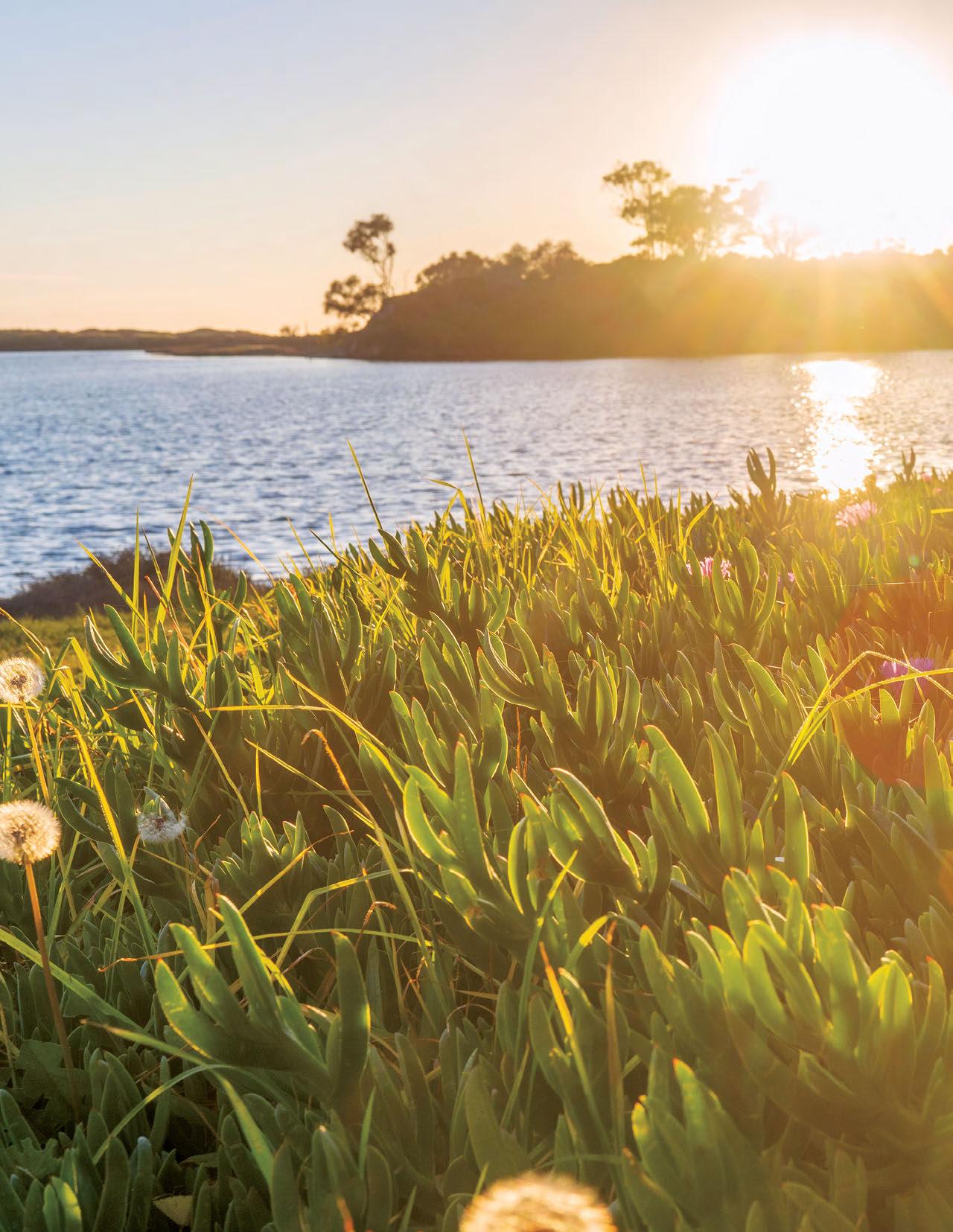
The donors profiled in these pages used a variety of planned giving options to create their legacies with UC Santa Barbara. Advantages include significant tax benefits, additional lifetime income and, most importantly, the ability to make a difference for generations of UC Santa Barbara students. Interested in exploring? Below are descriptions of some of the planned giving opportunities available:
• Bequests: Name the UC Santa Barbara Foundation as a beneficiary in your will or living trust. We can provide you with the appropriate bequest language so you may direct your gift to the program or project that best fits your passion.
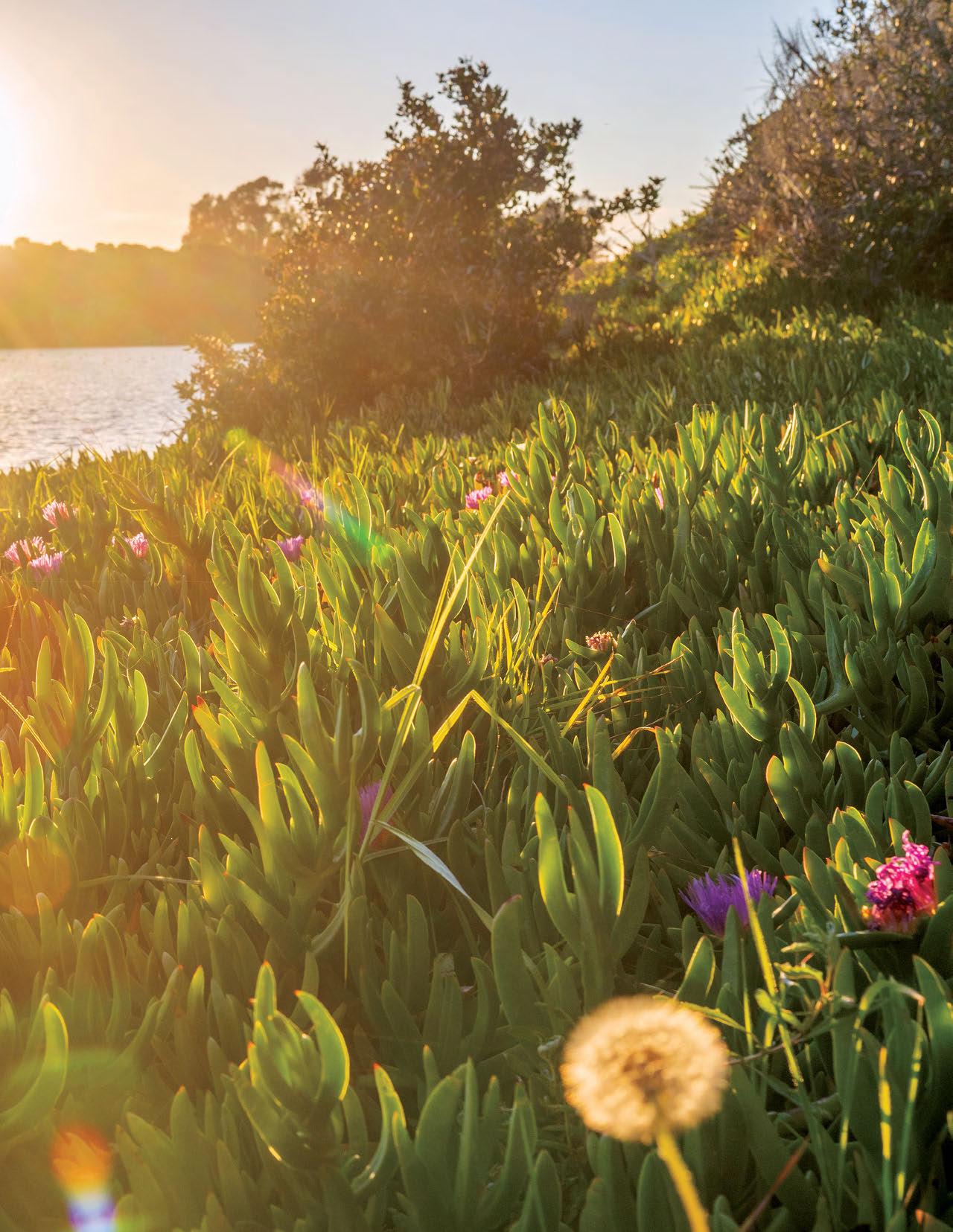
• IRA/Life Insurance: Name the UC Santa Barbara Foundation and the program of your choice as a beneficiary of all or a portion of your retirement plan or life insurance policy.
• Charitable Gift Annuity: This option is a contract between you and the UC Regents on behalf of UC Santa Barbara. In exchange for your irrevocable gift of cash or appreciated assets, you can receive a guaranteed, lifetime income in monthly or quarterly installments based on your age. We would be happy to provide you with additional information and a sample proposal upon your request.
• Charitable Remainder Trust: Transfer cash or appreciated property to the trust and receive significant tax benefits and annual income. Payments may be fixed or variable, and the trust must be funded with a minimum of $250,000. Upon the termination of the trust, the assets are transferred to the UC Santa Barbara Foundation and the program or project of your choice.
• Gifts of real estate are often some of the most creative and beneficial planned gifts. Real estate may be used to fund the life income vehicles described above or a Retained Life Estate.
To learn more about these giving options, please visit plannedgiving.ucsb.edu. If you wish to discuss planned or deferred giving options at UC Santa Barbara, or have questions about how your gift can support a program close to your heart, please contact Ilana Ormond, Senior Director of Planned Giving. 805.893.5556 · ilana.ormond@ucsb.edu
